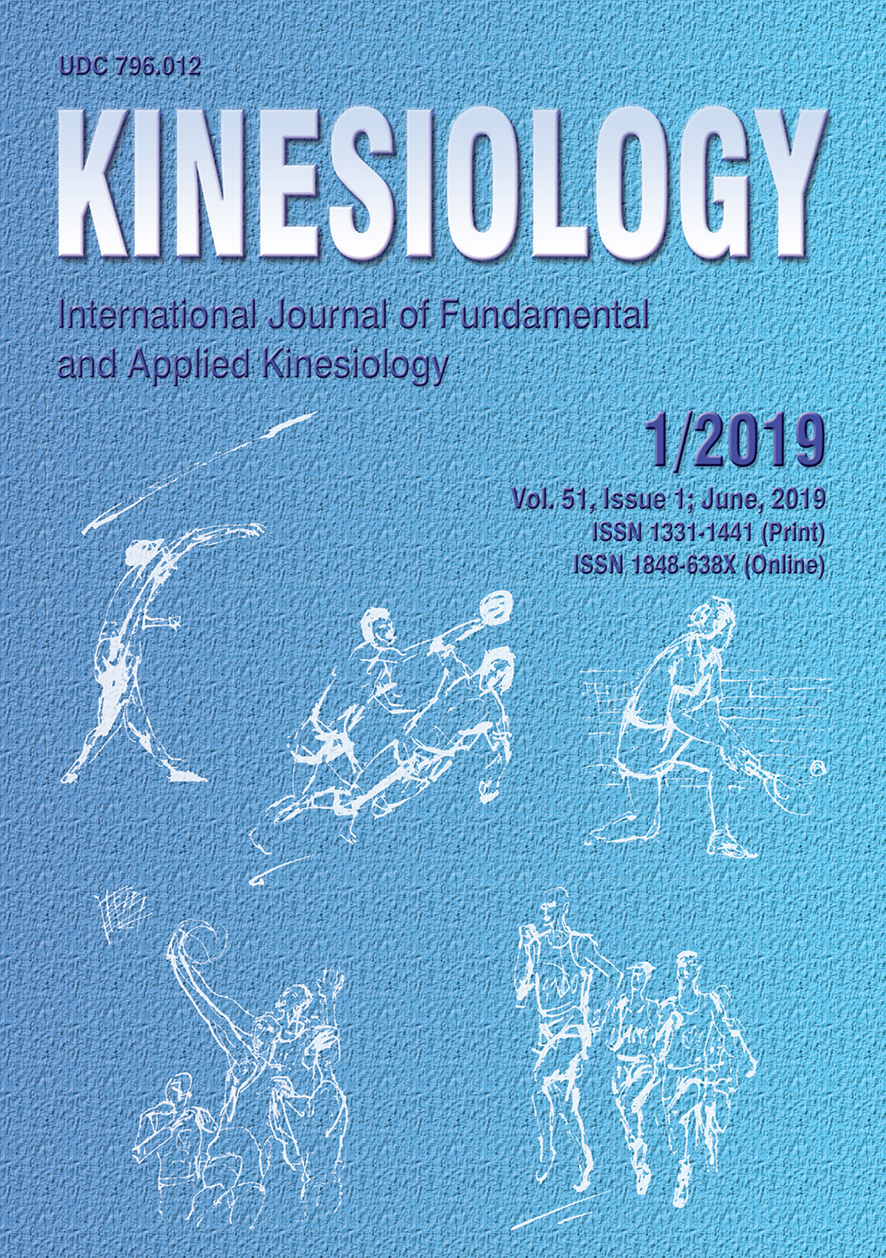Muscle Dysmorphia in Norwegian Gym-Going Men: An Initial Investigation
Abstract
The purpose of the present study was to explore the prevalence of muscle dysmorphia (MD) symptomatology and further to examine the association between MD symptomatology, body mass index (BMI), and weekly training duration (WTD) in gym-going men. Subjects included 156 gym-going men (Mage = 25.3, SD = 6.9 years, MWTD= 6.9, SD = 3.5 hours, and MBMI = 25.3, SD = 3.4). According to BMI, 90 subjects were of normal weight and 66 overweight. The results of this investigation confirmed prevalence of MD symptomatology, and revealed no statistical significant difference in prevalence between normal weight and overweight groups in total MDDI score, MD symptomatology ‘appearance intolerance’ (AI) and ‘functional impairment’ (FI); however, differences between groups were detected in MD symptomatology ‘drive for size’ (DFS) and WTD (p < .01). Correlation analysis revealed that WTD significantly correlated with FI and BMI (p < .01), and BMI significantly correlated with FI and AI (p < .05). In conclusion, a higher prevalence of MD symptomatology was stronger associated with normal weight BMI, and WTD was not associated with overall MD symptomatology except for with FI. Practitioners may need to take into account the BMI and training duration when suspecting MD in gym-going men. Normal weight men may be the most vulnerable group for MD; however, these men do not necessarily need to be excessively training at the gym to be at risk of having or developing MD.
Keywords: appearance intolerance, drive for size, functional impairment
Downloads
Published
How to Cite
Issue
Section
License
Copyright (c) 2019 Kinesiology

This work is licensed under a Creative Commons Attribution 4.0 International License.
At Faculty of Kinesiology we recognize that access to quality research is vital to the scientific community and beyond. Kinesiology is non-profit journal and all costs of publishing and peer review process are covered by the publisher itself or other funding sources like Ministry of Science and Education of the Republic of Croatia. Full text papers are also available free of charge at http://hrcak.srce.hr/kineziologija. There are no restrictions on self archiving of any form of paper (preprint, postprint and publisher's version).
Articles are distributed under the terms of the CC BY - NC 4.0
Kinesiology does not charge any fees to authors to submit or publish articles in our journal.


